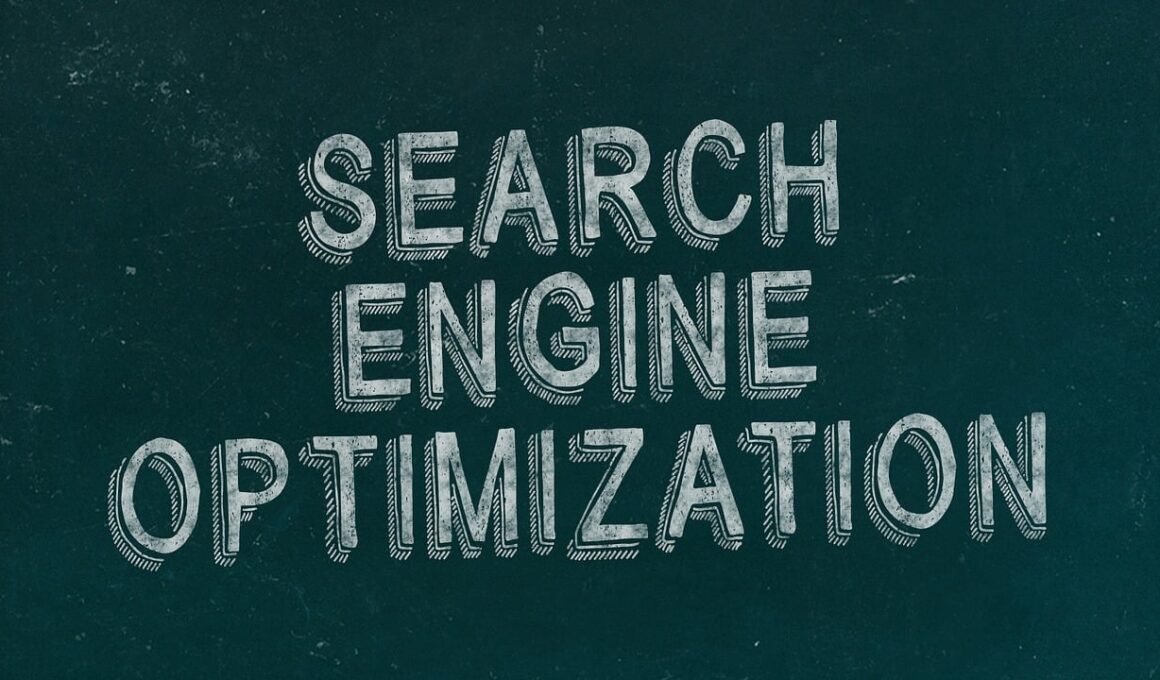Paid Local Ads: Pros and Cons for SEO Growth
In the realm of digital marketing, the debate surrounding paid local ads focuses on their effectiveness and impact on SEO growth. Paid local ads, commonly associated with platforms like Google Ads or social media, offer immediate visibility to your business. While organic growth often takes time to develop, paid ads grant instant access to a targeted audience, especially useful for local businesses needing a quick influx of customers. However, the costs associated with these ads can add up, leading to questions about their return on investment. If managed effectively, paid local ads can complement an organic strategy, driving traffic and awareness while you build your SEO foundation. Businesses must evaluate whether the short-term benefits of paid ads outweigh the long-term strategy of organic growth. Moreover, analyzing competition, budget constraints, and target audience becomes crucial in determining the best approach. Investing in both tactics can yield a balanced presence in the market, enhancing visibility and driving local traffic. However, careful monitoring is essential to ensure that the investment in paid ads translates into meaningful engagement and customer acquisition over time.
When evaluating the advantages of paid local ads, you often find immediate exposure as a significant perk. Unlike organic SEO strategies that can take months to build momentum, paid ads help you connect with your local audience instantly. Businesses often rely on tools like Google My Business to boost their visibility, effectively leveraging ads to reach potential customers actively searching for services. Furthermore, detailed targeting options allow businesses to refine their campaigns, ensuring that ads reach individuals who are most likely to convert. These ads can be tailored based on demographics, location, and user behavior, enhancing their effectiveness. Moreover, performance tracking features enable businesses to measure success instantly and adapt strategies as needed. However, continual investment is necessary to maintain visibility, which can lead to reliance on paid ads. This may lead to reduced motivation for organic growth strategies, posing a risk to long-term sustainability. Balancing between paid and organic strategies often involves a compromise. It becomes crucial to ensure that paid local ads remain a tool for enhancement rather than a crutch, influencing the overall sustainability of your SEO growth efforts.
The Drawbacks of Paid Local Ads
Despite their inherent advantages, paid local ads come with their set of challenges. One major drawback is the cost associated with running these advertisements. For small businesses especially, budget constraints can limit the reach and effectiveness of their campaigns. Further, if not carefully managed or optimized, paid ads may lead to diminishing returns, resulting in wasted resources. A lack of proper targeting can also render ads inefficient, delivering them to users who have little interest in the service or product offered. Ad bloat in search results may cause consumers to become wary, thereby questioning the credibility of paid listings. Additionally, once a business pulls its ad spend, its visibility drastically decreases, unlike organic SEO efforts that can maintain presence without continued investment. Businesses might find themselves in a cycle of spending to keep their brand relevant online. This short-term thinking could divert focus from developing a solid organic presence. Therefore, it becomes essential to implement paid strategies carefully, ensuring that they work in conjunction with long-term SEO goals for sustainable growth without over-reliance on paid tactics.
Moreover, while paid local ads can deliver immediate results, they lack the depth of engagement that organic traffic can provide. Engagement metrics, such as time spent on the site and pages viewed, may suffer with paid methods, leading to lower overall site authority in the long term. This might affect the overall branding perception, as users often trust organic results more than paid placements. The user experience plays a critical role in online marketing, and over-reliance on paid ads may lead to a neglect of content quality or relevant experiences that drive organic traffic. Additionally, the ad landscape evolves rapidly, with algorithm changes impacting ad performance and effectiveness. Businesses must constantly adapt their strategies, adding another level of complexity. Finally, navigating through policy changes and regulations in digital advertising requires diligence and expertise, as mishaps may incur penalties or disapproval from ad networks. Keeping abreast with these changes is paramount to maintaining a successful advertising campaign. Consequently, while paid ads can serve as a worthwhile investment, they should complement, not replace, a comprehensive local SEO strategy.
Best Practices for Implementing Paid Local Ads
Implementing paid local ads successfully necessitates adherence to best practices to maximize effectiveness. First and foremost, defining clear goals for your ad campaigns is essential. Determine whether your objective is to drive website traffic, increase store visits, or generate leads. Tailoring your approach based on specific goals enhances strategy alignment and measurement. Next, conducting in-depth keyword research aids in choosing the right keywords to target, ensuring your ads reach the intended audience. Additionally, creating compelling ad copy that resonates with local interests can significantly influence engagement rates. Leveraging visuals—such as attention-grabbing images or videos—helps captivate your audience, particularly on platforms like Instagram and Facebook. Furthermore, continually monitoring ad performance and making necessary adjustments is crucial. Tools provided by platforms enable data analysis, helping businesses refine targeting, improve bidding strategies, and optimize ad placement. Testing different ad formats allows businesses to discover what works best for their specific audience. Finally, integrating feedback and user behavior insights will serve in fostering campaigns that lead to both immediate traction and long-lasting local presence in the competitive market.
Additionally, embracing A/B testing can dramatically enhance the performance of paid ads. This testing method allows businesses to compare different variations of their ads to identify what yields the best results. Variations can include changes in headline text, ad copy, visuals, or call-to-action phrases. Identifying what resonates most with your audience is crucial for future campaigns. Pairing these insights with retargeting strategies bolsters visibility—ensuring your ads remain present to prospective customers who have previously engaged with your content. Paid platforms allow businesses to retarget visitors, significantly improving conversion rates. This is especially beneficial for local businesses aiming to influence potential customers who may have shown interest but didn’t make a purchase. Furthermore, combining paid ads with well-optimized landing pages enhances user experience and conversion potential. Landing pages tailored to specific ad campaigns yield better results than generic ones. Taking the time to build targeted, relevant landing pages aligns with user expectations and leads to increased engagement rates. Thus, a coherent strategy that leverages A/B testing and retargeting can elevate the impact of paid local ads markedly.
Conclusion: Evaluating the Role of Paid Local Ads in SEO
Ultimately, understanding the pros and cons of paid local ads becomes crucial for businesses striving to achieve SEO growth. While these ads can deliver immediate visibility and targeted reach, they should not overshadow the importance of organic search strategies. Balancing both paid and organic growth offers a holistic approach, enhancing overall digital presence. Businesses that effectively integrate these methods often find themselves enjoying significant advantages in local markets. Evaluating which strategy aligns best with company goals, budget, and audience preferences is vital. Additionally, monitoring and analyzing the performance of both ads and organic content ensures all channels receive adequate attention and refinement. By nurturing a dual approach, businesses can build a robust online presence that drives sustainable growth and enhances customer trust. Long-term success in SEO growth is founded on consistent user engagement and brand visibility. Therefore, paid local ads can serve as a stepping stone, provided they are applied strategically and with an emphasis on complementing organic growth efforts. Thus, businesses must focus on maintaining this balance to thrive in the competitive landscape of digital marketing.
The digital landscape is continually evolving, necessitating that businesses remain agile and responsive to changes in consumer behavior and technologies. Integration of paid and organic strategies should be dynamic, allowing businesses to pivot based on real-time data insights and market trends. Engaging in conversations within industry communities can foster knowledge sharing, helping businesses to stay ahead of advancements in both paid advertising and search engine optimization practices. Willingness to experiment with new ad formats and channels could unlock additional pathways to local growth that may not have been considered previously. Overall, the landscape for local SEO and digital marketing is incredibly vibrant, filled with opportunities for those who are willing to invest time and resources effectively. By leveraging the strengths of both paid and organic strategies, local businesses can create holistic marketing plans that resonate with their audience, ultimately driving growth. As the future unfolds, businesses should focus on building lasting relationships with their customers, positioning themselves as community leaders while effectively utilizing the tools at their disposal to enhance both brand visibility and loyalty. This synergy between paid and organic efforts paves the way for comprehensive growth strategies that are not only effective but sustainable in the long run.


